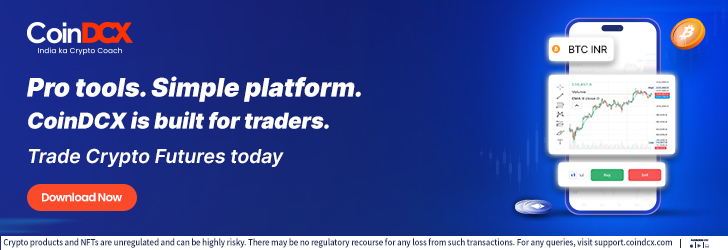In the ever-evolving landscape of search engine optimization (SEO), strategies come and go, but one principle has remained a cornerstone—backlinks. Whether you’re a digital marketer, blogger, or SEO agency, building quality backlinks is often at the heart of your growth strategy.
However, doing it effectively, ethically, and sustainably can be challenging when you’re going solo. That’s where the link building community comes into play, offering a collaborative and transparent space where SEO professionals can exchange links, share tactics, and grow together.
In this article, we’ll explore what link building communities are, how they work, the benefits they offer, and how to become a valuable member. We’ll also highlight red flags to avoid and how to evaluate the credibility of such communities.
What is a Link Building Community?
A link building community is a network or collective of SEO professionals, content marketers, agencies, and website owners who collaborate to build backlinks ethically and efficiently. These communities operate through Slack groups, private forums, Discord servers, or dedicated platforms designed specifically for link exchange and collaboration.
Members typically:
- Share guest post opportunities
- Exchange backlinks through relevant content
- Promote each other’s articles
- Recommend useful SEO tools or strategies
- Help troubleshoot backlink issues (e.g., disavowing toxic links)
Unlike traditional outreach where you cold-email hundreds of website owners, a community-based model brings a warm, cooperative environment where trust and transparency are already established.
Why Are Link Building Communities Gaining Popularity?
1. Rising Costs of Traditional Link Building:
Outreach-based link building is time-consuming and often expensive. Paying for high-quality guest posts or niche edit placements can cost anywhere from $100 to $500+ per link. Many marketers spend countless hours crafting personalized emails with minimal success.
In contrast, joining a reputable link building community can eliminate most of these hassles. Members already understand the value of links and are usually open to relevant and mutually beneficial collaborations—making the process more efficient and cost-effective.
2. Trust and Transparency:
Spammy link building techniques have damaged SEO reputations and relationships in the past. Communities help restore transparency and quality control, as most have internal vetting systems or moderation to ensure that all exchanges are ethical and white-hat.
3. Better Matching of Opportunities:
With a diverse group of websites from multiple niches, members can find highly relevant backlink opportunities that improve domain authority and search rankings without compromising content quality or topic alignment.
Key Benefits of Joining a Link Building Community
1. Access to Quality and Relevant Websites:
Instead of combing through Google or directories, you instantly get access to a pool of websites with known metrics—domain rating (DR), organic traffic, industry niche, and content standards. This makes it easier to select high-value backlink targets.
2. Learning and Skill Sharing:
Most communities are more than just a trading floor for links—they are learning hubs. You get to interact with other SEO professionals who share tips, audits, success stories, and even templates for outreach or content pitching.
3. Sustainable and Scalable Backlink Strategy:
As your network grows, so do your backlink opportunities. With ongoing discussions, new member additions, and recurring collaborations, your link building strategy becomes sustainable and organically scalable.
4. Diversified Link Portfolio:
Link diversity is important for natural backlink profiles. A community gives you access to websites across different niches and domains, allowing you to build a balanced, healthy backlink profile without over-relying on a few sources.
Types of Link Building Communities
Not all link building communities are created equal. Here are a few types based on structure and approach:
1. Niche-Specific Communities:
Focused on a specific industry (e.g., SaaS, Health, Finance), these communities offer highly targeted link opportunities. They’re ideal for professionals who want links from websites that are highly relevant to their audience.
2. Open Networking Groups:
These are often large and informal. They operate mostly on Slack, Discord, or Facebook. While they offer volume and diversity, the quality may vary widely, and there may be little to no vetting.
3. Paid Platforms:
Professional platforms like Authority Builders, Link-able, or niche-specific networks provide a more structured and secure environment. These usually come with moderation, filters, and verified metrics, but often require a subscription fee.
How to Identify a Good Link Building Community
Here are some qualities that separate great communities from the mediocre:
- Vetted Members: Make sure there’s a review or screening process for new entrants.
- Active Participation: Look for frequent interactions, ongoing link opportunities, and collaborative discussions.
- Moderation and Guidelines: Rules around link quality, relevancy, and ethical standards are signs of a well-managed group.
- Transparency in Metrics: Members should openly share traffic stats, DR, and niche info to help others make informed choices.
Always take time to observe conversations, check success stories, and possibly talk to a few members before diving in.
Red Flags to Watch Out For
Link building communities offer many benefits, but some may operate under grey-hat or black-hat practices that can harm your SEO in the long run. Avoid communities where:
- Links are openly bought and sold without disclosure
- Spammy or PBN links are promoted
- There is little to no content relevancy between exchanged links
- Members are unresponsive or disappear after exchanges
- There’s no moderation or accountability
Building links is important, but doing it wrong can damage your domain authority and lead to Google penalties.
How to Make the Most of a Link Building Community
Once you join, success isn’t guaranteed. Here’s how to get the most value:
1. Be Active and Responsive:
Engage with other members, share your own opportunities, and respond promptly to messages. Relationships are the currency of any community.
2. Share Real Value:
Whether it’s a guest post slot, a niche edit, or even a content collaboration, ensure you’re offering something of real value. Don’t just ask for links—offer them too.
3. Use Metrics, But Don’t Obsess:
Metrics like DR, DA, and traffic are important, but not everything. Focus on content quality, topical relevance, and user engagement when choosing where to place or accept a backlink.
4. Document and Track Everything:
Use a spreadsheet or project management tool to keep track of what links you’ve exchanged, with whom, and on what dates. This helps you avoid duplicate efforts or bad links.
Real-World Success Stories
Many SEO professionals credit their growth to active involvement in link building communities. Here are a few examples:
- A solo blogger in the health niche grew from 5K to 50K monthly organic visits in under a year by consistently trading guest posts through a niche-specific Slack group.
- A small SaaS startup built over 150 high-quality backlinks in six months through collaboration inside a private Discord server.
- An agency reduced its client acquisition cost by 40% by leveraging a paid community where it exchanged backlinks with other agencies working in non-competing niches.
These examples show the power of collaboration and networking when it comes to SEO.
Final Thoughts
The world of SEO doesn’t have to be a solitary game. With the increasing complexity of Google’s algorithms and growing competition, community-based link building is becoming one of the most sustainable and scalable strategies out there. A well-managed, transparent, and active link building community can fast-track your growth, help you avoid costly mistakes, and provide long-term value in the form of relationships, visibility, and traffic.
As long as you choose the right community, follow best practices, and prioritize value over vanity metrics, you’ll find that collaboration often beats cold outreach—every single time.






